-
161.Marthe Vogt
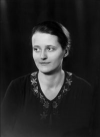
-
Marthe Vogt was an important neurobiologist who worked on the idea that messages were transferred from one brain cell to another via chemicals. Her work increased understanding of the role of neurotransmitters in the brain and supported the development of modern medical treatments for mental illnesses such as depression.
-
162.Mary Anning
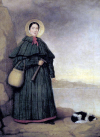
-
Anning was a fossil collector and dealer in the 19th century whose discoveries helped to change the way that people thought about the world.
-
163.Mary Barber
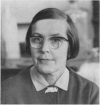
-
Mary Barber was a British bacteriologist who led the field of research in antibiotic resistance. She was the fifth generation in a long line of family members to study medicine and was a prominent female figure in the field of pathology.
-
164.Mary Elizabeth Barber
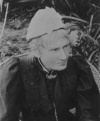
-
Mary Elizabeth Barber studied birds, moths, reptiles and plants. She uncovered many new species of plants and butterflies, and provided leading scientists with specimens and drawings. She also helped to broaden the knowledge of stratigraphic geology of South Africa, which describes the relationships between different layers of rock.
-
165.Mary Lyon
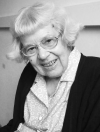
-
Many Lyon was a British scientist and one of the world’s foremost geneticists whose work had a fundamental impact on human medical research. Lyon’s key discovery of X chromosome inactivation in mice revolutionised our understanding of mammalian genetics, and was dubbed “lyonisation” in her honour.
-
166.Matilda Knowles
-
Matilda Knowles was part of the generation that marked a new era for women in science. She is regarded as the founder of modern studies of Irish lichens and she was a contributor to the ground-breaking Clare Island Survey from 1909-11.
-
167.Maurice Wilkins
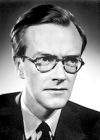
-
Maurice Wilkins is best known for producing the first image of DNA fibres which contributed to the Watson and Crick double-helix model.
-
168.Max Perutz
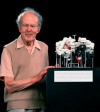
-
As the first scientist to establish a link between the three-dimensional structure of proteins and their function in particular disease, Max Perutz was a pioneer in structural biology and the founding father of molecular pathology.
-
169.Michael Behe
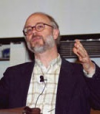
-
Michael Behe is an American biochemist, author and advocate of intelligent design. Behe is most famous for his argument for irreducible complexity, which describes that some biochemical structures are too complex to be adequately explained by evolutionary mechanisms and so are probably the result of intelligent design.
-
170.Michael Faraday
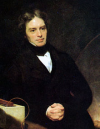
-
The son of a blacksmith, Michael Faraday was certainly not from the sort of gentlemanly background that the vast majority of his scientific contemporaries came from. He received little formal education and would train as an apprentice in a bookshop. But his work did give him access to a vital scientific resource - books. Reading through the library in George Riebau’s shop, Faraday developed an interest in science, especially questions surrounding electricity, and soon after he was attending lectures at the place where he would make his name, the Royal Institution.
-
171.Dr Michael Roberts
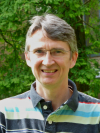
-
Dr Mike Roberts is a current researcher at the University of Lancaster who is interested in how plants defend themselves against different environmental stresses, like pests and diseases. His work tries to figure out how plants react to different stresses and how he can manipulate them to being better prepared so as to reduce the need for pesticide usage.
-
172.Millais Culpin
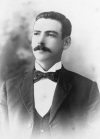
-
Millais Culpin was a British jack of several trades, becoming well respected in the fields of teaching, entomology (the study of insects) and psychology.
-
173.Muriel Harris
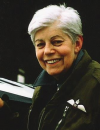
-
Muriel Harris was the hospital operating theatre superintendent who collaborated with Patrick Steptoe and Robert Edwards to develop in vitro fertilisation (IVF) at Dr Kershaw’s Hospital in Oldham and subsequently Bourn Hall Clinic, Cambridge.
-
174.Dr Nancy Lane
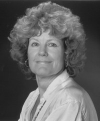
-
Typically, women have really struggled to establish themselves in STEM (science, technology, engineering, and maths) careers. However, one woman has made it her mission to make sure that this changes. Dr Nancy Lane is the founder of the Women in Science and Engineering Initiative (WiSeTI) at the University of Cambridge. This initiative involves a steering committee of senior academics that are championing equal opportunities and encouraging women to flourish in science.
-
175.Nikolaas Tinbergen
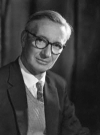
-
Nikolaas Tinbergen, known as Niko, had a passion for the outdoors and a love for observing wildlife from childhood. He exhibited little academic interest growing up but his fascination with animal behaviour began from an early age, when he watched the nest building of sticklebacks in the aquaria that his parents owned.
-
176.Norman Myers
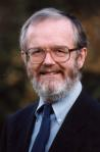
- Norman Myers is the originator of the biodiversity hotspot strategy and he highlighted the threat of the mass extinction of species.
-
177.Oliver Gilbert
-
Oliver Gilbert was a pioneer ecologist who specialised in urban ecology and post-industrial landscapes, lichenology and exotic plants. He carried out work on lichens as indicators of air pollution at a time when very little was known about these plants.
-
178.Patrick Steptoe
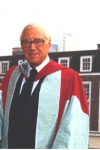
-
Patrick Steptoe was an obstetrician, gynaecologist and a pioneer of fertility treatment who worked in partnership with Sir Robert Edwards to develop in vitro fertilisation (IVF) at a time when infertility was not seen as a priority issue. This work has resulted in the birth of millions of babies worldwide.
-
179.Professor Sir Paul Nurse
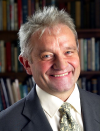
-
Professor Sir Paul Nurse Hon FSB is president of the Royal Society and a geneticist who works on what controls the division and shape of cells. In 2001 he was awarded the Nobel Prize in Physiology or Medicine for his work on the cell cycle of fission yeast.
-
180.Penny Gowland
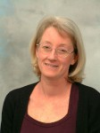
-
Penny Gowland is a current Professor of Physics at the University of Nottingham who explores the possible uses of Magnetic Resonance Imaging (MRI) in lots of different settings.



